Yachting World
- Digital Edition


Obituary: Bruce Kirby, designer of the Laser dinghy (1929 – 2021)
- James Wilkie Devoy
- July 27, 2021
Bruce Kirby, journalist, three-time Olympian and designer of the Laser dinghy, has died at the age of 92.

Bruce Kirby is best remembered as the designer for the Laser single-handed dinghy, now known as the ILCA. He was born in Ottawa, Canada in 1929 and began his journalism career in newspapers before writing for, and later becoming editor of One-Design Yachtsman (now Sailing World magazine).

Bruce Kirby Photo: Neil Rabinowitz
He began sailing at the age of six with his father and brother, and moved on to the International 14 class in his teens. Winning the world championship twice in this class in 1958 and 1961. He also represented Canada in three Olympic regattas sailing the Finn in 1956 and 1964, and a Star keelboat in 1968.
Kirby had no formal education in boat design and used the fairly modest skills he had developed in model boat carving to create his first International 14, which he called the Mark One. Kirby reminisced about his first design, “it did pretty well; we won regattas.”
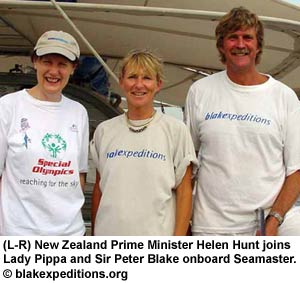
Obituary: Sir Peter Blake
The following obituary was published in the New Zealand Herald today

Obituary: Ed Dubois 1952-2016
Few yacht designers were as influential as Ed Dubois, who died in March at the age of 63. He trailblazed…
Kirby is famously quoted on his introduction to yacht design as saying: “I had a copy of Skene’s Elements of Yacht Design . If you can understand 50% of what’s in that book, you can design a boat. Design isn’t brain surgery. We should always pretend that it is, but it’s really not.”
Kirby’s most famous design, the Laser, was created in 1970. The story of the Laser’s creation has become a little embellished over time with claims that it was designed on the back of an envelope or even a dinner napkin.
The embellishment is only slight however; Kirby did do the first rough draft while on the phone with his business partner Ian Bruce and it really is just a doodle on a notepad.
The original concept was as simple as ‘we need a car topper’ from Ian Bruce, and history was born. Ian Bruce jokingly referred to Kirby’s sketch as “the million dollar doodle.”
The Laser went on to sell over 220,000 boats, becoming the world’s most popular one-design. Its high performance, combined with Kirby’s simple lines and rig, made the Laser a ubiquitous part of millions of sailors’ journeys and honed the skills of many future champions. That simple sketch managed to capture the essence of dinghy sailing: fast, fun, physical, and very rewarding.
Today it remains an Olympic class, and has been so for seven Games, while the smaller rigged Laser Radial is also the women’s singlehanded Olympic dinghy class.
It has been the proving ground of many of the most talented sailors in the sport, including Ben Ainslie , Robert Scheidt, Tom Slingsby, Glenn Bourke, Carolijn Brouwer and Marit Bouwmeester.
Beyond the Laser, Bruce Kirby designed many yachts, including the Sonar (a former Paralympic keelboat and his personal favourite of all designs), the Apollo, Kirby 23 and Kirby 25 to name a few.
He also designed two America’s Cup 12-Metre yachts, Canada in 1983 and Canada II in 1987, and was part of the committee that created the IACC boats which superseded the Twelves. Kirby remained a life-long fan of the America’s Cup , claiming he was “probably the only person left who remembers listening to the America’s Cup on the radio before the war.”
Kirby spent the last 50 years living in Connecticut with his wife Margo, where they raised two daughters.
If you enjoyed this….
Yachting World is the world’s leading magazine for bluewater cruisers and offshore sailors. Every month we have inspirational adventures and practical features to help you realise your sailing dreams. Build your knowledge with a subscription delivered to your door. See our latest offers and save at least 30% off the cover price.
- Share full article
Advertisement
Supported by
Bruce Kirby, Who Transformed Sailing With a ‘Doodle,’ Dies at 92
On yellow legal paper, Mr. Kirby, a self-taught designer and Olympic sailor, came up with an impromptu design for a lightweight craft that changed the face of sailing.

By Chris Museler
Bruce Kirby, a Canadian-born journalist, Olympic sailor and self-taught naval architect whose design for a lightweight fiberglass dinghy, originally sketched on a piece of yellow legal paper, changed the face of sailing, died on Monday at his home in the village of Rowayton in Norwalk, Conn. He was 92.
His wife, Margo Kirby, confirmed his death.
Dinghy racing in North America and Europe in the late 1960s revolved around the International 14, a lightweight, 14-foot, two-person craft, and by then Mr. Kirby had carved out a niche for himself moonlighting as a designer in the 14 sailing class, spinning off variations on the original design that would have the dinghy planing and skipping across the water’s surface. His day job was as editor of the sailing magazine One-Design & Offshore Yachtsman in Chicago.
He had also won renown racing 14s and was a three-time Olympian for Canada, though without winning a medal.
One day in 1969 he received a phone call from a friend, Ian Bruce, an industrial designer and boating enthusiast in Montreal who as a side job had been building complex wooden hulls to Mr. Kirby’s I-14 designs and selling them. But with little margin in that business, he was looking for a new small-boat design — an easy-to-build, fiberglass sailboat that a solo sailor could race and that would help keep his I-14 business rolling.
Grabbing a yellow legal pad, Mr. Kirby promptly drew one up, envisioning a lightweight fiberglass hull, just under 14 feet long. It would eventually be christened the Laser and become a worldwide phenomenon.
“When Ian called him in 1969, Bruce was doodling,” said Peter Bjorn, a former partner in Performance Sailcraft, the first manufacturer of the Laser. “Ian lofted it,” he added, referring to the drawing of final plans, “in the fall of 1970, and they tweaked it. There was snow on the ground when they finally put the molds together. Bruce came and sailed it. And that was it.”
The boat was rigged up for the 1971 New York Boat Show with a sticker price of $595 (about $3,780 today). Before the doors closed, 144 were sold.
“All of a sudden,” Mr. Bjorn said, “there was something that wasn’t quite a toy — they took a bit to sail — and you could take money straight out of your pocket to buy it and throw it on the roof of your car.”
Mr. Bjorn, who set up the first dealer network for Lasers, said the boat had originally been called the Weekender, then the TGIF. Its creators finally settled on the contemporary-sounding Laser, to capitalize on that latest technological advancement.
Coming in colors like orange, yellow, light blue and British racing green, the boat was an instant sensation. Its streamlined simplicity — with a teak tiller and a sail whose sleeve slid over an aluminum mast — made the Laser as basic in design as the Windsurfer and the Hobie Cat catamaran, both of which had arrived on the beach boat scene around the same time. What made the Laser different from them, however, was that it could be ideal both for cruising around with friends and for performance racing by a single sailor.
“It was a boat you could control with your body,” said Peter Commette, winner of the first Laser world championships, in 1974.
More than 250,000 of the boats have been built worldwide since 1970, making Mr. Kirby’s creation one of the most influential sailboat designs of all time. The Laser is used for men’s and women’s single-handed events in the Olympics.
Mr. Kirby came to call his original legal pad drawing the “million dollar doodle.” The royalties he received allowed him to leave his day job, launching him into an eclectic boat-design career that touched every corner of the sport, from the America’s Cup to junior sailing to cruising craft for shallow estuaries, and established him as one of the world’s pre-eminent boat designers.
Bruce Robert William Kirby was born on Jan. 2, 1929, in Ottawa into a nautical family with membership in the Brittania Boating Club in Ottawa (a grandfather was a club commodore). His father, David Patee Kirby, was in the building supply business. His mother, Eileen (Bruce) Kirby traced her lineage to Scottish kings, according to family lore. His paternal great-grandfather was Adm. Henry W. Bruce (1792-1863), a noted commander in the Royal Navy who was said to have participated in the War of 1812 early in his career.
The family’s wealth all but evaporated during the Depression, leaving the Kirbys with a 10-bedroom house, many boats and, for the children, practically no choice but to sail. “You just grow up doing it; it was like asking someone if they remember learning to talk,” Mr. Kirby told Nautical Quarterly magazine in 1982.
He followed in his father’s wake, racing small boats on the Ottawa River during Canada’s fleeting summers and devouring copies of Yachting magazine in the winter. The best small-boat sailors of the time raced International 14s, two-person boats, each usually built in the home or garage according to design specifications. Mr. Kirby began to travel and rake in trophies in the class.
If his first love was sailing, his second was journalism. A lung ailment kept him out of college, and through his father’s connections he became, at 20, a reporter for The Ottawa Journal for $25 a week (the equivalent of about $290 in Canadian money today).
His knowledge of sailing brought him reporting stints from an ocean sailing yacht in Europe. Moving to The Montreal Star, he joined its copy desk but also covered the America’s Cup. He headed for Chicago to become editor of One-Design & Offshore Yachtsman in 1965.
Never far from sailing, Mr. Kirby qualified for the 1956 Olympics, in Melbourne, Australia, in the single-handed Finn class. He went on to sail in the 1964 Games (in Tokyo) in the same class and in the 1968 games (centered in Mexico City) in the two-person Star class.
He worked out his designs using intuition and from reading Norman Skene’s “Elements of Yacht Design.” His I-14 designs were steppingstones to the Laser, which in turn opened doors, bringing him a host of design commissions, including one for a yacht named Runaway, Canada’s 1981 entry in the Admiral’s Cup international competition. Runaway put him on a global stage.
Then came Canada I, the 1983 Canadian entry for the America’s Cup, and its design lifted Kirby’s reputation to new heights.
“Bruce came up with a good boat,” said Terry McLaughlin, the skipper of Canada I, Canada’s first America’s Cup entry since the 1800s. “But Australia II was a breakthrough,” he added, referring to the Ben Lexcen design for the Australian challenger that year.
Though Canada I made the semifinals, the Canadians were no match for the Australians, who went on to break the longest winning streak in sports history — 132 years — by defeating the Americans that year for the cup.
Kirby designed another Cup boat, the Canada II, for the 1987 series. He also produced a total of 63 innovative and popular sailboat designs, including the 23-foot Sonar keelboat, which he created for the Noroton Yacht Club in Darien, Conn., where he was a commodore. The Sonar has been sailed on every continent and is used in the Paralympic Games.
His Laser was selected for the men’s single-handed sailing event for the 1996 Olympics and for the women’s single-handed event in 2008.
“For me the big thing I love about the Laser is the simplicity of design,” Sarah Douglas, a Canadian representative in this year’s Tokyo Olympics, said in a phone interview from Japan. “I grew up in Barbados. It’s the most accessible boat. If the Laser wasn’t in the Games, I don’t know how smaller nations can compete in sailing.”
Kirby, who became a naturalized American citizen, lived along the Five Mile River in Rowayton for 45 years, designing in his basement. He and Mr. Bruce were awarded the Order of Canada for their contributions to sailing, and Mr. Kirby was inducted into the National Sailing Hall of Fame in 2012.
In addition to his wife, he is survived by two daughters, Kelly Kirby and Janice Duffy, and two granddaughters.
In his final years Mr. Kirby spent time working on his autobiography and continuing to lend advice to young sailors at the Noroton Yacht Club, even as his health declined.
“Physically he was quite compromised,” Margo Kirby, his wife, said. “He blamed it on hiking for years on small boats. He said he’d do it all over again.”
An earlier version of this obituary referred incorrectly to the use of Mr. Kirby's Laser sailboat in men's and women's single-handed events in Olympic competition. Men sail the craft in the Laser class, women in the Laser Radial class. It is not the case that they both compete in a class whose name was changed to ILCA, for International Laser Class Association.
How we handle corrections
clock This article was published more than 2 years ago
Bruce Kirby, sailboat designer whose Laser dinghy became a global phenomenon, dies at 92

Doodling on a yellow legal pad in 1969, Bruce Kirby designed one of the most beloved sailboats in history, a low-slung fiberglass dinghy that became known as the Laser.
Light enough to be fastened to the roof of a car, stable and speedy enough to be used by weekend hobbyists as well as Olympic racers, the boat became a fixture of international competitions and local yacht clubs.
Its popularity established Mr. Kirby as one of the world’s preeminent sailboat designers and enabled him to quit his day job as editor of a yachting magazine to practice design full-time. He had no formal training but went on to create such influential sailboats as the San Juan 24 and the Sonar, a 23-foot keelboat now used in Paralympic competitions.
Mr. Kirby, whose original Laser sketch entered sailing lore as the “million-dollar doodle,” was 92 when he died July 19 at his home in Norwalk, Conn. The cause was congestive heart failure, said his wife, Margo Kirby.
An accomplished sailor who competed in three Olympic Games for his native Canada, Mr. Kirby grew up in Ottawa, listening to radio broadcasts of the America’s Cup competition. He sailed his father’s 24-foot boats up and down the river and began experimenting with hull design as a teenager, while carving a model boat from a piece of pine taken from his aunt’s kitchen cupboard.
By age 15, he was sailing in major competitions, racing a class of 14-foot dinghy known as the International 14. After losing a 1958 regatta on the Isle of Wight, he began designing his own 14s, relying on intuition and a pilfered copy of Norman L. Skene’s “Elements of Yacht Design,” first published in 1904. “If you can understand 50 percent of what’s in that book, you can design a boat,” he later said.
Mr. Kirby was 40, living on the Connecticut shore and editing the magazine One-Design & Offshore Yachtsman, when he got a call from his friend Ian Bruce, an industrial designer who enlisted him to design what became the Laser. An offshoot of the Canadian retailer Hudson’s Bay wanted Bruce to develop a one-person sailboat light enough to mount on a car. As they talked about the project over the phone, Mr. Kirby started sketching.
As he told it , he soon mailed his design to Bruce, along with a note: “If your clients don’t want to build the boat be sure to hang onto the drawings because it might make us a buck some day.”
The retailer didn’t end up making the dinghy, and Mr. Kirby’s plans remained in a drawer until 1970, when he and Bruce built a prototype for a regatta in Lake Geneva, Wis. Aided by Hans Fogh, an Olympic sailor from Denmark who provided a sail and served as the skipper, they won a race and began fielding offers from spectators on the beach.
At the time, their boat was known as the Weekender, a name that was reinforced by the large block letters on its sail: TGIF. It acquired a new, modern name — Laser — before being unveiled at the 1971 New York Boat Show, where Mr. Kirby and Bruce sold 144 Lasers off the floor. Nearly 14 feet long, with a 130-pound fiberglass hull and aluminum mast, the boat sold for $695 each and soon became a global phenomenon.
“From a technology standpoint, it’s a very simple boat, and just a great, great boat to learn how to sail fast,” Scott MacLeod, who won North American collegiate championships in a Laser, told Popular Science in a 2019 interview .
More than 250,000 Lasers have been built, according to the National Sailing Hall of Fame, which inducted Mr. Kirby in 2012 . The 1980 Laser world championships in Kingston, Ontario, drew 350 entrants, and the boats have been used at the Olympics since 1996, when organizers reportedly added the Laser sailing class to make it easier for younger racers to compete without having to buy a more expensive boat.
“It’s very affordable. You don’t have to worry about crew, and the boats are simple,” Jim Brady, an American sailor who won a silver medal at the 1992 Games, told The Washington Post in 1993. “It’s going to make it easy for a lot of younger people to do much better with a lot less money than ever before.”
[ Laser beams in new age of sailing ]
Indeed, the Laser is now used in World Sailing’s Emerging Nations Program, which promotes sailing around the world. In a statement last week, the organization’s president, Quanhai Li, called Mr. Kirby “a tremendous ambassador for the sport,” adding that he “paved the way for generations of sailors who raced and enjoyed his creations.”
The second of three children, Bruce Robert William Kirby was born in Ottawa on Jan. 2, 1929. His mother was a homemaker. His father served in the Canadian army during World War I, ran a building supply company and encouraged his children to join him on the water.
Mr. Kirby, who never graduated from college, got his start in journalism, working as a reporter for the Ottawa Journal before becoming an editor at the Montreal Star. “When there were lulls,” he later told Sailing World magazine , “I would draw boats on these pads that you put headlines on.”
All the while, he continued to sail. Mr. Kirby made his Olympic debut at Melbourne in 1956 — he came in eighth sailing a single-handed Finn, his best finish at the Olympics — and later competed at the 1964 Games in Tokyo and the 1968 Games in Mexico City.
His more than 60 boat designs included Canada I, a 62-foot sailboat that reached the semifinals of the 1983 Louis Vuitton Cup, and Canada II, which competed for the cup four years later in an unsuccessful bid to challenge for the America’s Cup. He received the Order of Canada in 2018 for his contributions to sailing.
By his account, he made “quite a lot of money” from the Laser but stopped receiving royalty checks about a decade ago, leading to a prolonged trademark and royalties dispute with the boat’s European manufacturer. A jury awarded him nearly $7 million in damages last year. As a result of the trademark fight, the Laser is known in official competitions as the ILCA, or the International Laser Class Association.
In addition to his wife of 65 years, the former Margo Dancey, of Norwalk, survivors include two daughters, Janice Duffy of Bethel, Conn., and Kelly Kirby of Wallingford, Vt.; a sister; and two granddaughters.
Mr. Kirby’s wife said he continued to race until about two years ago, following a long battle with knee and back pain. He blamed the ailments on years of hiking, a technique in which a sailor leans far outside the boat, almost parallel to the water, to maintain speed. But he said he found it hard to quit, especially when it came to sailing his beloved Sonar keelboat, which he called his favorite design.
“Once I’m in my Sonar,” the National Sailing Hall quoted him as saying, “the aches and pains go away.”


- Find A School
- Certifications
- North U Sail Trim
- Inside Sailing with Peter Isler
- Docking Made Easy
- Study Quizzes
- Bite-sized Lessons
- Fun Quizzes
- Sailing Challenge

ASA Remembers Laser Designer Bruce Kirby
By: Lenox Grasso American Sailing Association
Following in the wake of the death of Frank Butler, President and Chief Executive Officer of Catalina Yachts, in Nov 2020 at age 92, boat designer and three-time Olympian Bruce Kirby, best known globally as the designer of the Laser 14 Olympic sailing dinghy, passed away at his home in Connecticut on 19 Jul 2021, also at age 92. In 1969, at the request of a friend calling from Montreal to design a “car-topper” sailboat, Kirby sketched a preliminary design for the Laser while still on the telephone with boat builder and fellow Canadian Ian Bruce. Kirby kept that faded sketch, which he called the “Million Dollar Doodle”, in a drawer of his waterfront home in Rowayton, CT, for over fifty years. “That sketch paid for our house”, says Margo, Kirby’s wife of 65 years. At the New York Boat Show in Jan 1971, 144 Lasers sold off the floor, a record number of sales that still stands today.
Born in Ottawa, Ontario, in 1929, Kirby was a sailor and newspaperman before he garnered acclaim as a yacht designer. He enjoyed a lifetime as a competitive sailor beginning in International 14 dinghies at age 15. After being beaten at a Cowes Regatta in heavy wind, he drew the Kirby Mark 1 on a piece of shelf paper. It was fast upwind in a breeze. Kirby sold 40 of them. He went on to design several International 14s, 739 boats total, and won the World Championships in 1958 and 1961. Along the way, Kirby also jumped into the Finn class to sail for Canada in the 1956 Melbourne Olympics. Kirby skipped the 1960 Rome Olympics while he and Margo raised their two daughters, but he returned to Finn Class at the 1964 Tokyo Olympics in Enoshima, the same venue for Tokyo 2020. At Tokyo 1964, he was in second place in heavy air when the Russian ahead of him broached, capsized, and collided. Kirby believed that he violated a race rule and asked Paul Elvstrom, four-time Olympic Gold Medalist (three consecutive in Finn Class) his opinion. Elvstrom deadpanned that, “A capsized sailor cannot hoist a protest flag!” Even so, Kirby disqualified himself to race officials. Kirby’s third and final Olympics was in Star Class at the 1968 Mexico City Games on Acapulco Bay.

In his early adult life, Kirby was also a journalist. He started work in 1949 as a reporter for the Ottawa Journal . In 1956, he married Margo and moved to the Montreal Star . By the mid-1960s Kirby was an editor of One Design and Offshore Yachtsman (now Sailing World ). In 1970, Kirby became editor of Yacht Racing where he stayed until 1975. By then, mounting Laser royalties enabled Kirby to become a full-time, self-taught, yacht designer. He designed the Apollo 16, Sonar 23, Blazer 23, San Juan 24, Ideal 18, and the Kirby 23, 25, and 30. For several years, after that Oct 1969 telephone call and “million-dollar doodle” that led to the Laser, Kirby jokingly urged Margo to answer every call, “because it might be someone who will ask me to design a 12-Metre”! That call actually did come in 1981, after Kirby served as both the designer and skipper of Runaway , one of three yachts in Canada’s 1981 Admiral’s Cup campaign. Kirby designed Canada One for the 1983 Cup, then turned her into the wing-keeled Canada Two for the 1987 Cup. “I remember listening to the America’s Cup on CBC radio with my father and brother at Lac Deschenes Sailing Club and at Britannia Yacht Club, both on the Ottawa River, before the war, in 1934 and in 1937 when Ranger beat Endeavor.”
Today, Bruce Kirby is considered to be one of the great yacht designers of all time. The Laser is the first of the single-manufacturer one designs that are now prolific in the sport of sailing. Over a quarter-million have been built. Bruce Kirby was inducted into the Sailing Hall of Fame in 2012 and named a Member of the Order of Canada in 2017. Margo recalls her mother asking her new son-in-law, “When will you get sailing out of your system?” He never did.
Related Posts:

- Learn To Sail
- Mobile Apps
- Online Courses
- Upcoming Courses
- Sailor Resources
- ASA Log Book
- Bite Sized Lessons
- Knots Made Easy
- Catamaran Challenge
- Sailing Vacations
- Sailing Cruises
- Charter Resources
- International Proficiency Certificate
- Find A Charter
- All Articles
- Sailing Tips
- Sailing Terms
- Destinations
- Environmental
- Initiatives
- Instructor Resources
- Become An Instructor
- Become An ASA School
- Member / Instructor Login
- Affiliate Login
BoatNews.com
Bruce Kirby, a pencil stroke that marked the history of sailing with the Laser
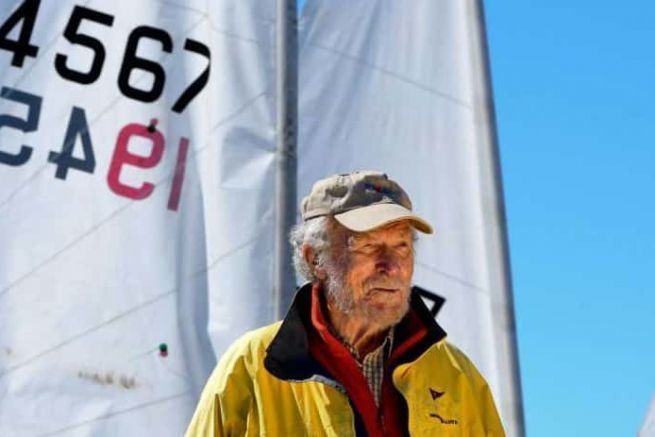
As ex-Laser ILCAs return to the sailing events of the Paris 2024 Olympic Games, we look back at the figure of Bruce Kirby, inventor of the famous dinghy who died in 2021.
From nautical journalist to naval architect
Bruce Kirby was born in Ottawa, Canada, on February 2, 1929, and died on July 18, 2021. Initially a nautical journalist, it was the design of an emblematic dinghy that led to his professional breakthrough, the Laser , making him one of the great figures of sailing.
At the age of 15, he took part in his first regattas in International 14 dinghies, which appeared in the early 20s. He was already thinking about making boats faster. After being beaten in a regatta at Cowes, he designed his first boat, the Kirby Mark I, fast upwind in a breeze, of which 30 were sold.
With no formal training , he learned from the books of the day, notably Skene's Element of Yacht Design. He went on to design his own Kirby International 14, of which 7 versions were built, totalling 739 boats.
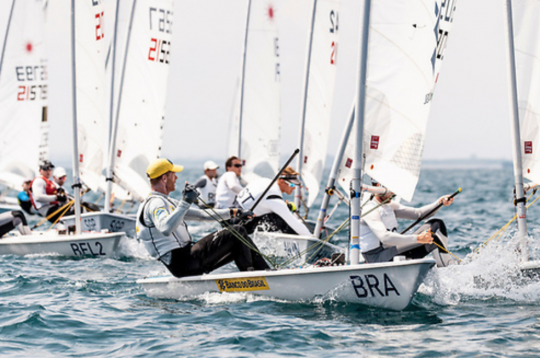
Three Olympic Games campaigns
In 1964, Bruce Kirby moved to Finland and joined the Canadian Olympic team. Since the mid-60s, however, he has been editor-in-chief of One Design Yachtsman (now Sailing Word). He took part in his first Finn Games in Melbourne in 1956, where he became friends with Danish Paul Elvtrom, a three-time Olympic medallist in this category. He repeated the operation in Enoshima in 1964, where the Tokyo 2020 Games will be held, before sailing a Star for the 1968 Games.
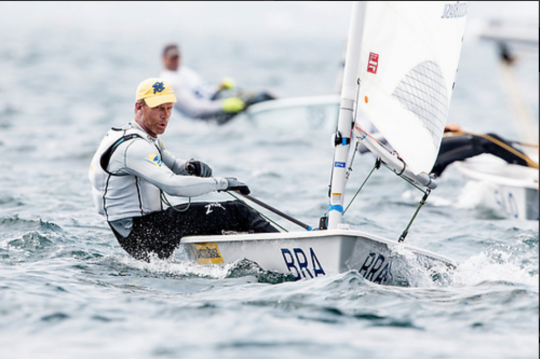
The brilliant inventor of the Laser
He owes his worldwide renown to his invention of the Laser (now ILCA ), which he picked up while making a phone call, and launched in 1971. Today, over 220,000 Laser hulls have been built worldwide. Relatively affordable, the fleet is one of the largest in the world among the Olympic classes.
Although he is world-renowned as the father of the Laser , he also designed many other boats: the Sonar, the Kirby 25, the Ideal 18, the America's Cup 12-meter, as well as production cruisers such as the San Juan 24 and 30, 40-foot ocean racers for the Admiral's Cup and cruising boats.
Bruce Kirby has received numerous decorations: induction into the Canadian and American Halls of Fame, Order of Canada, International Yacht Racing Hall of Fame, International Laser Class Association Hall of Fame...
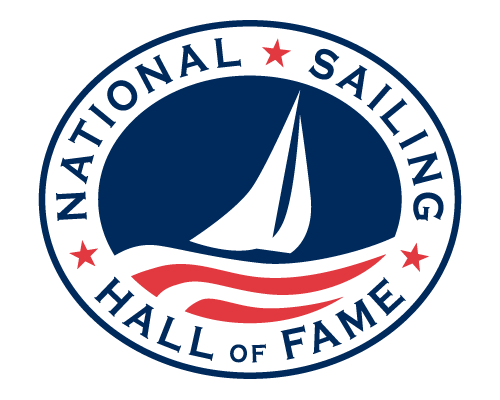
All Inductees > Class of 2012
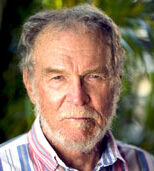
Bruce Robert William Kirby
January 2, 1929 - July 19, 2021
Ottawa, CA - US Citizen May 1999
Wikipedia entry for Bruce Kirby
Master list of Bruce Kirby boat designs – from Bruce Kirby Marine
Olympian Who Designed World’s Most Beloved Boat
Laser Series Changed the Face of Sailboat Racing
Lifelong Love Affair
Sail-World Obituary
Bruce Kirby was a newspaper man in Ottawa and Montreal before he became a yacht designer. A competitive sailor in International 14 dinghies from age 15, his focus was on making the boats faster. After being beaten in a regatta at Cowes in heavy wind, he drew the Kirby Mark I on a piece of shelf paper. It was fast upwind in a breeze. He sold 30 of the Mark I. Untrained, Kirby began designing by observing. “I had a copy of Skene’s Elements of Yacht Design . If you can understand 50% of what’s in that book, you can design a boat. Design isn’t brain surgery. We should always pretend that it is, but it’s really not.” Having made that modest disclaimer, Kirby grants that designing a vessel that is compatible with two disparate elements – air and water – is, in fact, a challenge. There were seven versions of the Kirby International 14 built: 739 boats total. “It was done seat of the pants,” Kirby says. “No testing. It was all empirical. Each new boat was a take-off on the old one.” In 1964, Kirby moved to Finns and made the Canadian Olympic team. He didn’t quit his day job. By the mid-1960s, Kirby had become editor of One Design Yachtsman (now Sailing World ). He jumped into a Star boat in 1968, and again represented Canada in the Olympics. In 1971, a car-top dinghy he had designed at a friend’s request was launched, and Kirby’s fame was assured. The boat was called the Laser. More than 250,000 of this demanding Olympic class dinghy have been built. In the summer of 2011, at age 82, Kirby sailed in the Sonar European Championships held in Scotland. He won two races. He continues to sail the 24-foot Sonar, personal favorite of his 63 designs, out of the Noroton Yacht Club in Darien, Connecticut. He gives away 20 years to the next oldest skipper, but still manages to record frequent top three finishes. “I do my best work in 15 knots and above,” he says. “Once I’m in my Sonar, the aches and pains go away.” – Roger Vaughan
Preserving America’s Sailing Legacy
Engaging Sailing’s Next Generation
Stay Connected to the National Sailing Hall of Fame
UK Edition Change
- UK Politics
- News Videos
- Paris 2024 Olympics
- Rugby Union
- Sport Videos
- John Rentoul
- Mary Dejevsky
- Andrew Grice
- Sean O’Grady
- Photography
- Theatre & Dance
- Culture Videos
- Food & Drink
- Health & Families
- Royal Family
- Electric Vehicles
- Lifestyle Videos
- UK Hotel Reviews
- News & Advice
- Simon Calder
- Australia & New Zealand
- South America
- C. America & Caribbean
- Middle East
- Politics Explained
- News Analysis
- Today’s Edition
- Home & Garden
- Fashion & Beauty
- Travel & Outdoors
- Sports & Fitness
- Sustainable Living
- Climate Videos
- Behind The Headlines
- On The Ground
- Decomplicated
- You Ask The Questions
- Binge Watch
- Travel Smart
- Watch on your TV
- Crosswords & Puzzles
- Most Commented
- Newsletters
- Ask Me Anything
- Virtual Events
- Betting Sites
- Online Casinos
- Wine Offers
Thank you for registering
Please refresh the page or navigate to another page on the site to be automatically logged in Please refresh your browser to be logged in
Bruce Kirby: Designer who transformed sailing with his work
Kirby’s invention of a low-slung fibreglass dinghy made waves in the boating world, article bookmarked.
Find your bookmarks in your Independent Premium section, under my profile
An accomplished sailor, Kirby raced boats all his life
Doodling on a yellow legal pad in 1969, Bruce Kirby, who has died aged 92, designed one of the most beloved sailing boats in history, a low-slung fibreglass dinghy that became known as the Laser.
Light enough to be fastened to the roof of a car, yet stable and speedy enough to be used by weekend hobbyists as well as Olympic racers, the boat became a fixture of international competitions and local yacht clubs.
Its popularity established Kirby as one of the world’s pre-eminent sailing-boat designers and enabled him to leave his day job as editor of a yachting magazine to practice design full time. He had no formal training, but went on to create such influential sailing boats as the San Juan 24 and the Sonar, a 23ft keelboat now used in Paralympic competitions.
An accomplished sailor who competed in three Olympic Games for his native Canada, Kirby grew up in Ottawa, listening to radio broadcasts of the America’s Cup competition. He sailed his father’s 24ft boats up and down the river and began experimenting with hull design as a teenager, while carving a model boat from a piece of pine taken from his aunt’s kitchen cupboard.
By age 15, he was sailing in major competitions, racing a class of 14ft dinghy known as the International 14. After losing a 1958 regatta on the Isle of Wight, he began designing his own 14s, relying on intuition and a pilfered copy of Norman Skene’s Elements of Yacht Design , first published in 1904. “If you can understand 50 per cent of what’s in that book, you can design a boat,” he later said.
Recommended
- Terence Conran: Pioneering designer who founded Habitat and revolutionised the way we live
Kirby was 40, living on the Connecticut shore and editing the magazine One-Design & Offshore Yachtsman , when he got a call from his friend Ian Bruce, an industrial designer who enlisted him to design what became the Laser. An offshoot of the Canadian retailer Hudson’s Bay wanted Bruce to develop a one-person sailing boat light enough to mount on a car. As they talked about the project over the phone, Kirby started sketching.
As he told it, he soon sent his design to Bruce, along with a note: “If your clients don’t want to build the boat be sure to hang onto the drawings because it might make us a buck someday.”
The retailer didn’t end up making the dinghy, and Kirby’s plans remained in a drawer until 1970, when he and Bruce built a prototype for a regatta in Lake Geneva, Wisconsin. Aided by Hans Fogh, an Olympic sailor from Denmark who provided a sail and served as the skipper, they won a race and began fielding offers from spectators on the beach.
At the time, their boat was known as the Weekender, a name that was reinforced by the large block letters on its sail: TGIF. It acquired a new, modern name – Laser – before being unveiled at the 1971 New York Boat Show, where Kirby and Bruce sold 144 Lasers off the floor. Nearly 14ft long, with a 58kg fibreglass hull and aluminium mast, the boats sold for $695 each and soon became a global phenomenon.
“From a technology standpoint, it’s a very simple boat, and just a great, great boat to learn how to sail fast,” Scott MacLeod, who won North American collegiate championships in a Laser, told Popular Science in a 2019 interview.
More than 250,000 Lasers have been built, according to the National Sailing Hall of Fame, which inducted Kirby in 2012. The 1980 Laser world championships in Kingston, Ontario, drew 350 entrants, and the boats have been used at the Olympics since 1996, when organisers reportedly added the Laser sailing class to make it easier for younger racers to compete without having to buy a more expensive boat.
“It’s very affordable. You don’t have to worry about crew, and the boats are simple,” Jim Brady, an American sailor who won a silver medal at the 1992 Games, told The Washington Post in 1993. “It’s going to make it easy for a lot of younger people to do much better with a lot less money than ever before.”
Indeed, the Laser is now used in World Sailing’s Emerging Nations programme, which promotes sailing around the world. In a statement last week, the organisation’s president, Quanhai Li, called Kirby “a tremendous ambassador for the sport”, adding that he had “paved the way for generations of sailors who raced and enjoyed his creations”.
The second of three children, Bruce Robert William Kirby was born in Ottawa on 2 January 1929. His mother was a homemaker. His father served in the Canadian army during the Second World War, ran a building supply company, and encouraged his children to join him on the water.
Kirby, who never graduated from college, got his start in journalism working as a reporter for The Ottawa Journal before becoming an editor at The Montreal Star . “When there were lulls,” he later told Sailing World magazine, “I would draw boats on these pads that you put headlines on.”
All the while, he continued to sail. Kirby made his Olympic debut at Melbourne in 1956 – he came in eighth sailing a single-handed Finn, his best finish at the Olympics – and later competed at the 1964 Games in Tokyo and the 1968 Games in Mexico City.
His more than 60 boat designs included Canada I, a 62ft sailing boat that reached the semi-finals of the 1983 Louis Vuitton Cup, and Canada II, which competed for the cup four years later in an unsuccessful bid to challenge for the America’s Cup. He received the Order of Canada in 2018 for his contributions to sailing.
- Vaughan Oliver: Graphic designer whose album covers defined 1980s alternative music
By Kirby’s own account, he made “quite a lot of money” from the Laser but stopped receiving royalty checks about a decade ago, leading to a prolonged trademark and royalties dispute with the boat’s European manufacturer. A jury awarded him nearly $7m in damages last year. As a result of the trademark fight, the Laser is known in official competitions as the ILCA, which stands for International Laser Class Association.
In addition to his wife of 65 years, Margo (nee Dancey), survivors include two daughters, a sister, and two granddaughters.
Kirby’s wife said he continued to race until about two years ago, following a long battle with knee and back pain. He blamed the ailments on years of hiking, a technique in which a sailor leans far outside the boat, almost parallel to the water, to maintain speed. But he said he found it hard to quit, especially when it came to sailing his beloved Sonar keelboat, which he called his favourite design.
“Once I’m in my Sonar,” the National Sailing Hall quoted him as saying, “the aches and pains go away.”
Bruce Kirby, sailing boat designer, born 2 February 1929, died 19 July 2021
© The Washington Post
Join our commenting forum
Join thought-provoking conversations, follow other Independent readers and see their replies
Subscribe to Independent Premium to bookmark this article
Want to bookmark your favourite articles and stories to read or reference later? Start your Independent Premium subscription today.
New to The Independent?
Or if you would prefer:
Want an ad-free experience?
Hi {{indy.fullName}}
- My Independent Premium
- Account details
- Help centre

- CLASSIFIEDS
- NEWSLETTERS
- SUBMIT NEWS

Bruce Kirby, designer, three-times Olympian, and sailing journalist dies at 92yrs.
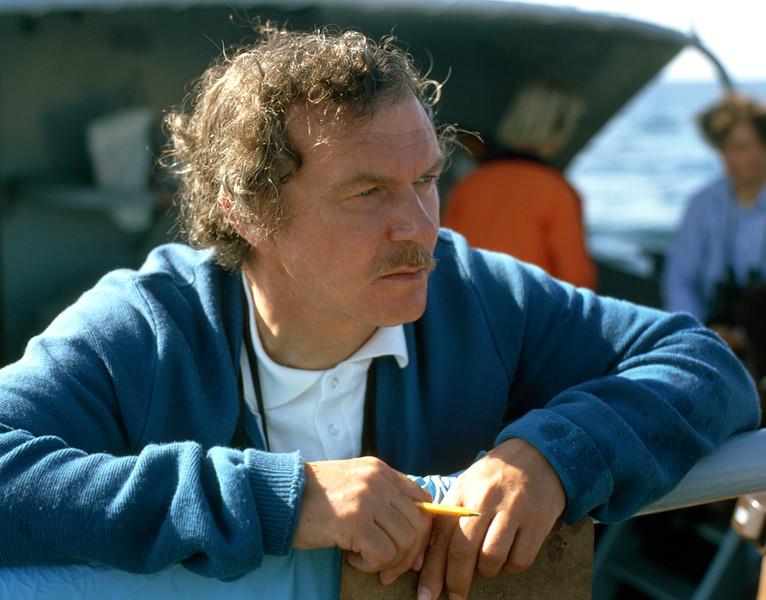
Related Articles
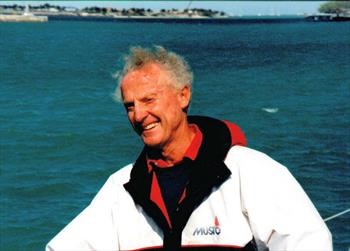
The story of the former Olympian who designed the world’s most beloved boat
In 1970, Bruce Kirby created the perfect single-person sailboat. What made the Laser so unbeatable?
By Andrew Blum | Published May 6, 2019 9:30 PM EDT
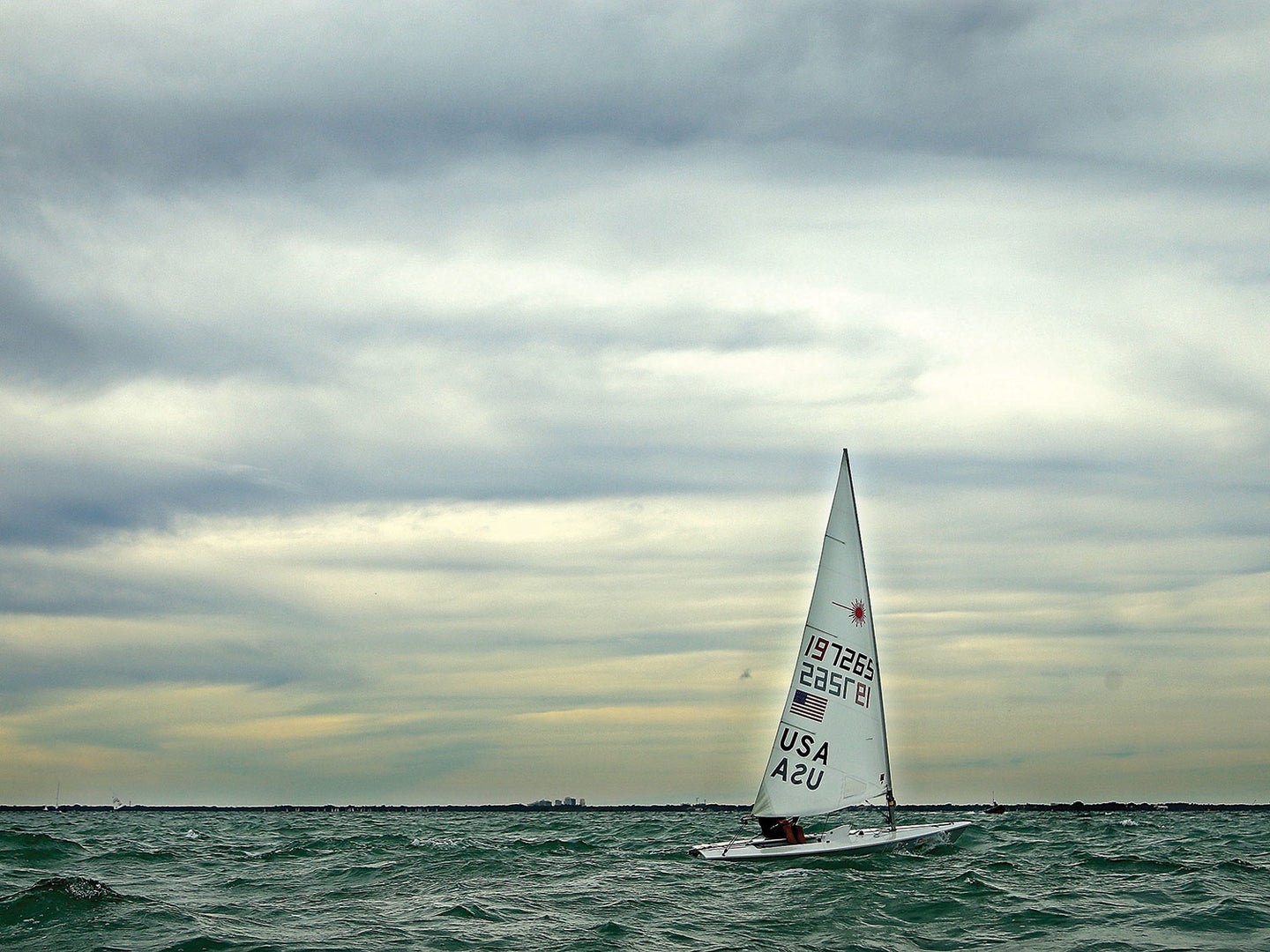
On a slate-gray day in September, 89-year-old Bruce Kirby leans against the pinstriped first-mate’s seat of Lulu as it motors in slow circles on Long Island Sound. Just outside the elegantly varnished cockpit, a fleet of small sailboats races by, its formation loose and shifting. Kirby follows the boats through a pair of binoculars. One, Jack , belongs to him; he’d be out there competing if it weren’t for his ailing back. But all of the boats are Kirby’s design.
Known as Sonars, Kirby drew their shape in 1979 with a day just like this in mind. The Noroton Yacht Club , Kirby’s home port in the suburban town of Darien, Connecticut, wanted a craft for its members to race—something nimble and fast, but also sturdy and well-behaved. The Sonar is a “one-design boat,” meaning its specifications and equipment are governed by strict rules to ensure that competing in one is a test of skill, not money. Sailing remains a sport of the wealthy, and left unchecked, they can take things to extremes. The superyachts of the America’s Cup have nine-figure R&D budgets, and crews who wear crash helmets and body armor to protect themselves at new limits of speed and performance. In contrast, a used Sonar can be had for under $10,000, and is stable enough that it’s been used by Paralympians since the 2000 games. Out on the sound that afternoon, 37 boats are vying for the Sonar North American Championship, with a few former Olympians among the skippers. The whole event is buoyed by Kirby’s presence.
Kirby is a world-class sailor and Olympian himself—he represented Canada in ’56, ’64, and ’68—but he is most famous as the designer of a slew of boats known for their swiftness, and also their clarity and simplicity. The epitome of his ethos was a blockbuster, one that defined his career and the course of sailing more broadly: the single-person racing dinghy known as the Laser.
Back on land, Kirby looks on as the competitors come off the water, windblown and skipping toward the toilets. A collision left one Sonar with a dinner-plate-size hole in its stern, and Kirby leans in for a closer look. The regatta’s press person asks him to do it again for the camera. During the awards ceremony, organizers call Kirby up to the stage for pictures with the winners, and the photographer makes everyone take off their shades, “except the rock star; he can leave his on.” The teasing is apt; among sailors, there are few bigger celebrities than Bruce Kirby. He comes by their affection honestly. His boats are a blast. “Who wants to design a slow boat?” Kirby likes to ask. “Or own one, for that matter.”
The wheel was a Neolithic invention. It appeared on the scene 5,000 or so years ago, part of a suite of advancements in agriculture. Sailboats came earlier. Australia was settled at least 50,000 years ago, and the first humans didn’t arrive on the continent by foot. Three thousand years ago, Odysseus himself was “sailing the winedark sea for ports of call on alien shores.” Christopher Columbus crossed the Atlantic, by sail, in 1492—marking the start of several hundred eventful years of wind-powered global travel. Only in the past 200 years have the steamship, internal-combustion engine, and jetliner erased the sailing ship’s primacy as a means of transportation. Sailboats themselves, however, have held on, not as necessity but as sport.

No surprise then that in 1969, when Bruce Kirby got a call from his friend, the Montreal-based industrial designer Ian Bruce, about drafting a new sailboat, the brief was for a piece of recreational equipment—a “car-topper” to go along with a line of outdoor gear (tents, cots, camping chairs) for the Hudson’s Bay Company retail chain. “I didn’t even know what a car-topper was,” Kirby recalls. The craft had to be easy to transport and rig in order to make it as painless as possible to get out on the water.
The dinghy wasn’t the first boat Kirby had dreamed up, but he wasn’t designing them full time. He was working as an editor at a sailing magazine, living (like now) on the Connecticut shore. As a designer, he was self-taught, nicking a copy of Skene’s Elements of Yacht Design , originally published in 1904, from a family friend and understanding, he estimates, about a third of it. But Kirby had “three-dimensional eyeballs,” as he describes it; he had no trouble envisioning the shape of a hull. And as a world-class racer of small boats, he knew what a fast one should feel like.
Kirby sketched on ruled paper as they talked. When they hung up, he brought it to his 7-foot drawing board and began to tinker. He knew he had to “get the numbers right.” His first consideration was what’s known as the prismatic coefficient, which defines the shape of the vessel. Is it a tub or a knife? Or, in the language of yacht design, is the hull “full” or “fine”? A rectangular barge has a prismatic coefficient of 1 because its hull entirely fills the prism made by its length, beam (or width), and draft (its depth). Most sailboats have a coefficient between 0.5 and 0.6, meaning about half that volume. If the prismatic coefficient is too high—if the boat is too fat—it will be slow, especially in light wind. But if the coefficient is too low—if the boat is too skinny—it will slice through the waves rather than ride up on top of them, or “plane.” A sailboat that planes well is fast, but more important, it’s fun. High up out of the water, wind and sail become more than the sum of their parts. Kirby settled on 0.55, a just-right number to make a well-balanced boat: fast but stable, neither too tippy nor too tubby.
But only if the sailor worked for it. Dinghies depend on “live ballast,” i.e., a person leaning, or “hiking,” out over the side. A big sail makes a boat zip, if its sailor can keep it flat. Basic physics says that their ability to do so depends on their weight, which of course varies from person to person. So, Kirby had a second number to choose: the ratio of sail size to the hull’s displacement, which depends on the weight of the boat plus its human. Kirby dialed in his dinghy to perform best with 180 pounds of flesh—in his words, “a good-size guy working like hell to go fast.” The decision was in part selfish; it described Kirby at the time.
Within a couple of weeks, Kirby had a sketch for Bruce. “He was in a bit of a hurry,” Kirby says. When Hudson’s Bay decided against selling a boat at all, Kirby told Bruce to hold on to the design: “I put a little more oomph in the boat than you asked for. It’s going to be a pretty hot little boat if we ever have a chance to build it.”
The chance came soon enough. In October 1970, Kirby’s magazine planned a promotional regatta for sailboats that cost less than $1,000, to be held at the Playboy Club in Lake Geneva, Wisconsin. Kirby and Bruce built a prototype of the car-topper and rigged it for the first time the day of the race. They came in second place. The bend of the mast didn’t match the shape of the sail, so they recut the cloth that night and won the next day’s contest. The little boat was fast and looked it, with a low profile that kept sailors close to the water. Spectators tried to buy it right off the beach.

Racing the wind
Back home, the friends began work on a second prototype, mailing plans back and forth across the border. They built it with an adjustable mast so they could play with different configurations. By December, it was ready for final testing. Doing laps on Lake Saint-Louis near Montreal, they moved the mast forward a few inches, cut its height, and took a foot off the end of the boom, looking for just the right feel. By the end of the cold weekend, they decided their hot little dinghy—13 feet, 10½ inches long—was ready for market. All it needed was a name. At a celebratory dinner, a sailing friend—a McGill University student—suggested it should be something youthful and international. “Why don’t you call it something like ‘Laser’?” he asked.
Ian Bruce had a small boatbuilding shop, and the men decided that he would manufacture the dinghy, while Kirby would receive royalties for the design. Bruce priced it at $695. At the New York Boat Show the next month, they collected orders for 144 Lasers. “We didn’t know what the hell was happening,” Kirby recalls.
There were societal factors at play. Postwar prosperity and the construction of new highways led to a boom in second-home ownership in the 1960s and ’70s. Many of those new residences were along lakes and reservoirs, and there were more of those too: Between 1933 and 1968, the Tennessee Valley Authority created more than 10,000 miles of new shoreline, while the Bureau of Land Management created 200 reservoirs. A new swath of the middle class could afford a lake house and, apparently, were ready for an inexpensive sailboat to go with it.
As intended, the Laser was cheap and easy to transport, rig, and bang into a dock. “From a technology standpoint, it’s a very simple boat, and just a great, great boat to learn how to sail fast,” says Scott MacLeod, a sailor at the Noroton Yacht Club who twice won the North American collegiate Singlehanded Championship in a Laser—1983 and 1985—and topped out at seventh place in the Worlds.
Laser sailors first organized themselves into an international class in 1974, codifying Kirby’s design into strictly defined specs, and setting the craft on a path toward the Olympics, where it debuted in Atlanta in 1996. In the ’80s, the introduction of a smaller sail, known as the Radial, allowed lighter sailors to be competitive in heavy winds, and became the standard for women’s Laser racing. The sport of sailing is said to be in perpetual decline, but Laser racing has persisted. The 2018 Laser Masters World Championships, held in Dún Laoghaire, Ireland, had 302 entries from 25 countries. (The apogee was the 1980 Laser Worlds, in Kingston, Ontario, a legendary event with 350 entries.) But there are also thousands of smaller weekend regattas, held everywhere from Sheepshead Bay in Brooklyn, New York, to the Victoria Nyanza Sailing Club in Kampala, Uganda.

All told, more than 220,000 Lasers have been built by licensed manufacturers on five continents. (Ian Bruce sold his boatbuilding business in the 1980s. He died in 2016.) With the exception of alternative rigs with smaller sails, like the Radial, the Laser has hardly changed. There have been slight upgrades, each one documented and approved in a “construction manual” maintained by the International Laser Class Association, a kind of worldwide club of Laser sailors. Each Laser factory is audited for conformity.
“Because it’s such a one-design boat, it really comes down to the sailor,” says Sarah Douglas, a contender for the Canadian 2020 Olympic sailing team who recently came in sixth at the Laser Worlds. “It’s not equipment differences or sail differences; it comes down to what the sailor is able to do out on the water,” she says. “At the end of the day, you can’t blame your boat. It’s just you. It is all you.”
For decades, Kirby and his wife, Margo, lived in a house on Connecticut’s little Five Mile River, just upstream from where it empties into Long Island Sound. It had a deepwater dock out the back, and Kirby’s Laser—sail number 0—was laid out on the lawn. (It’s now at the Mystic Seaport Museum .) But recently they moved a few blocks away, to a more modest Colonial with a two-car garage. There are still moving boxes to unpack, yet the walls are already hung with old photos of Kirby sailing his designs, and boat models known as half hulls mounted on plaques. The Laser gets pride of place. Next to the front door, there’s a framed action shot of the “hot little boat” at its best: in the sail position known as a reach, with spray skirting off the bow as if it had a jet engine underneath.
The Laser’s simplicity makes it something like the platonic ideal of a sailboat, like a child’s drawing with a line and a triangle—but enabled by the postwar innovations of fiberglass (for its hull), aluminum (for its mast), and Dacron (for its sail). It is the sort of definitive and lasting design that comes around only rarely, such as the iPhone or five-pocket bluejeans. Except bluejeans and iPhones are constantly being tweaked, evolving along with human taste or ingenuity. Each change widens the aperture of possibility. The object does a new thing, looks a new way, or serves a new purpose.
But a Laser is a sailboat. It moves by the power of the wind along the surface of the water, a function that hasn’t changed in millennia. Granted, Lasers rarely go anywhere, except in circles. They satisfy a basic human desire for speed and competition, each high on the hierarchy of pleasures. It’s all the more remarkable, then, that among innumerable variations of small sailboats over all time, the precise design of the Laser has ridden up on the wave of history, and stayed there, for 50 years—and counting.
This article was originally published in the Spring 2019 Transportation issue of Popular Science.
Like science, tech, and DIY projects?
Sign up to receive Popular Science's emails and get the highlights.
Great choice! Your favorites are temporarily saved for this session. Sign in to save them permanently, access them on any device, and receive relevant alerts.
- Sailboat Guide
Bruce Kirby
A Canadian newspaperman and former editor of Yacht Racing (predecessor to Sailing World), Bruce Kirby is best known for designing the Laser. Kirby started as a reporter in Montreal before editing Yacht Racing and, in his spare time, taking up yacht design and drawing the Laser. In 1970 Kirby became editor of Yacht Racing & Cruising (later Yacht Racing) where he stayed until 1975. Despite his duties with the magazine, Kirby was still designing boats which began with the International 14 class. Kirby designs won the world championships in 1958 and 1961. It was in 1969 that Kirby drew the Laser, one of the most successful sailboats ever. More than 200,000 have been built and it is currently an Olympic class. Kirby represented Canada at the Olympics games in 1956, 1964, and 1968. Among his other designs are two America’s Cup 12-Meters, Canada I and II, the Apollo, Sonar, Kirby 25, and 30, and Ideal 18 and San Juan 24. The latter with over a thousand built since its debut. Kirby also served as both designer and skipper on Runaway, Canada’s entry in the 1981 Admirals Cup.
33 Sailboats designed by Bruce Kirby

Laser (International)

San Juan 24

San Juan 30

Trapper 300

Seidelmann 24-1

Fox 18 (Kirby)

Kirby 1/4 T

Nightwind 35
Mystic mini-ton.

Ticon 34 CB

San Juan 23
San juan 23-2, north castle 30.

Blazer 23 (Kirby)
Kirby torch, laser radial, mirage 30 sx.

- About Sailboat Guide
©2024 Sea Time Tech, LLC
This site is protected by reCAPTCHA and the Google Privacy Policy and Terms of Service apply.
- SAILING NEWS
- AMERICA’S CUP
- THE OCEAN RACE
- VENDÉE GLOBE
- 52 SUPER SERIES
- GLOBAL SOLO CHALLENGE
- OCEAN GLOBE RACE
- SAILING WORLD
- SPANISH EDITION
- YOUTUBE CHANNEL
- MEDITERRANEAN

Bruce Kirby, the designer of the Laser, has passed away
Bruce Kirby, the designer of the Laser, has passed away at the age of 92yrs.

Together with fellow Canadian, Ian Bruce, Kirby designed what was originally called the “Weekender” which then became the “ Laser ” and now the “ILCA dinghy”.

Whatever its name, Bruce Kirby’ s simple design became the underpinning of what is now, more than 50 years later, the largest adult and youth sailing class in the world, sailed in more than 150 countries worldwide and a double Olympic class. The boat is such a simple design but clearly one that has survived the test of time. The class extends its deepest sympathies to Bruce’s family.
Bruce was a newspaper man in Ottawa and Montreal before he became a yacht designer. A competitive sailor in International 14 dinghies from age 15, his focus was on making the boats faster. After being beaten in a regatta at Cowes in heavy wind, he drew the Kirby Mark I on a piece of shelf paper. It was fast upwind in a breeze. He sold 30 of the Mark I.
Untrained, Bruce began designing by observing. “I had a copy of Skene’s Elements of Yacht Design. If you can understand 50% of what’s in that book, you can design a boat. Design isn’t brain surgery. We should always pretend that it is, but it’s really not.”
Having made that modest disclaimer, he grants that designing a vessel that is compatible with two disparate elements – air and water – is, in fact, a challenge. There were seven versions of the Kirby International 14 built: 739 boats total. “It was done seat of the pants,” he had explained. “No testing. It was all empirical. Each new boat was a take-off on the old one.”
In 1964, Bruce moved to Finns and made the Canadian Olympic team. He didn’t quit his day job. By the mid-1960s, he had become editor of One Design Yachtsman (now Sailing World). He jumped into a Star boat in 1968, and again represented Canada in the Olympics.
Although globally recognized as the designer of the 13’-10” Laser Olympic sailing dinghy, of which over 215,000 have now been built, his design career includes a multitude of successful classes such as the Sonar, Kirby 25 and Ideal 18, America’s Cup Twelve Meters; production racer/cruisers like the San Juan 24 and 30; offshore racing boats such as the Admiral’s Cup 40’ Runaway; a number of innovative cruising designs; and a variety of plywood Sharpie designs for home construction.
Share this:
- Bruce Kirby
SailGP in World’s Most Innovative Companies of 2024
The hidden world of hydro in america’s cup, the transat cic, a prestigious lineup and some serious promises.


Most Popular
Sailgp : full christchurch crew lists revealed, registration opens for the rolex big boat series, recent comments.
Nautica.News is your news,sailing,boats, yachting website. We provide you with the latest breaking news and videos straight from our sport
Contact us: [email protected]
© 2020 - 2023 NAUTICA.NEWS
- Privacy Policy
- Terms and Conditions of Use
Privacy Overview
Tom saunders named male & nz sailor of the year, us sailing team integrates garmin, 2021 rolex yachtsman and yachtswoman of the year.
Obituary: Ottawa-born Bruce Kirby, a three-time Olympian, designed the iconic Laser sailboat
Kirby worked as a newspaper reporter at the Ottawa Journal, and later became an editor at the Montreal Star, but his passion for sailing never left him. When the copy desk was quiet, he sketched boat designs on notepads.
Article content
Bruce Kirby grew up on the Ottawa River where he learned to sail small boats, to race them, and to obsess about their every detail.
“It was like asking someone if they remember learning to talk,” Kirby once said of learning to sail.
His family belonged to what was then known as the Britannia Boating Club, and it was the centre of their summer lives. Bruce followed radio broadcasts of the America’s Cup, whittled model boats from blocks of pine, and watched how sailboats moved through the water from beneath the surface of the waves.
Subscribe now to read the latest news in your city and across Canada.
- Exclusive articles from Elizabeth Payne, David Pugliese, Andrew Duffy, Bruce Deachman and others. Plus, food reviews and event listings in the weekly newsletter, Ottawa, Out of Office.
- Unlimited online access to Ottawa Citizen and 15 news sites with one account.
- Ottawa Citizen ePaper, an electronic replica of the print edition to view on any device, share and comment on.
- Daily puzzles, including the New York Times Crossword.
- Support local journalism.
Create an account or sign in to continue with your reading experience.
- Access articles from across Canada with one account.
- Share your thoughts and join the conversation in the comments.
- Enjoy additional articles per month.
- Get email updates from your favourite authors.
Sign In or Create an Account
“My mother used to say that if you cut his head open, the boats would fall out,” said Kirby’s sister, Beverley Brown, of Ottawa.
In 1969, one of his sketches — drawn during a phone conversation — would form the basis for a boat that was light, cheap and sensationally fast. The Laser, a single-person dinghy made of fibreglass and aluminum, would introduce sailing to many thousands of young people, become a regular part of Olympic racing – and make Bruce Kirby an international star of the sailing world.
Kirby, a three-time Canadian Olympian, died last month at his home in Rowayton, Conn. He was 92.
“Bruce has a huge sailing legacy, but his homerun was the Laser,” said Hugh McGugan, board chair of Sail Canada, the country’s governing body for the sport of sailing. “It was the right concept at the right time: It was small, simple and tightly-controlled.”
Bruce Kirby was born into a nautical family on Jan. 2, 1929: His father and grandfather were both accomplished sailors. Every spring, Kirby’s entire family moved from their Golden Triangle home to a cottage in Britannia, close to the yacht club.
His father built a small sailboat for Bruce and his older brother, David, when they were six and eight years old.
Rod Miller, 88, a retired teacher, was part of a group of boys, including the Kirby brothers, who hung out at the yacht club, where they’d offer to crew on larger boats. “It was a really good life,” he said. “We grew up on the river.”
During the Second World War, Miller said, the boys collected hollow military shells from along the shoreline — they were lobbed onto the ice of Shirleys Bay by flying boats taking target practice — to mine them for their nose lead. They melted the lead to refashion the material so that it could weigh down the keels of their boats.
Bruce took to racing and was constantly studying sailboats to understand what made them fast. “I used some of his high school textbooks after him,” said Brown, “and the margins were full of little drawings of boats. I think he used to daydream quite a bit.”
After graduating from Lisgar Collegiate, Kirby secured a job as a reporter in the sports department of the Ottawa Journal. He left the paper for a job at the Montreal Star in 1956 when his editors refused to take him off the night shift following his marriage to Margo Dancey, whom he met at the yacht club.
All the while, Kirby continued to compete in elite sailing regattas, including the 1956 Olympics in Melbourne, Australia, where he finished eighth in the one-person dinghy event. (He would also compete in the 1964 Tokyo and 1968 Mexico City Games.)
Kirby raced a dinghy known as the International 14, and in the late 1950s, he began to design his own improved versions of the boat. He relied on his experience and observations, and on a single book, Elements of Yacht Design, first published in 1904. He had no formal training in naval architecture since, by his own admission, he was “never any damn good at all in math.”
In 1965, Kirby moved to Chicago after being offered a job as editor of a sailing magazine, and it was there, in November 1969, that he received a fateful phone call from his friend, Ian Bruce, a Montreal-based boat builder. He told Kirby that he had been asked by the Hudson’s Bay Company to come up with a light sailboat, a “car-topper,” that families could take with them to the lake.
Kirby sketched an idea as the two spoke on the phone. During the next few weeks — “Best few days I’ve ever spent,” he once said — he refined his doodle: He wanted a boat skinny enough to find speed in a light breeze, but wide enough to offer stability on top of the waves. Kirby also opted for a relatively large sail that would require sailors to lean far over the side — a manoeuvre known as “hiking” — to keep the boat flat and fast on water.
“It’s going to be a pretty hot little boat if we ever have the chance to build it,” Kirby told Bruce.
Hudson’s Bay ultimately decided against the project, so Kirby and Bruce built a prototype on their own and entered it in a Wisconsin regatta in October 1970. Initially called the Weekender, it proved a sensation: people wanted to buy the hot little boat on the spot.
Kirby, Bruce and sail designer Hans Fogh made some refinements and brought their creation to the 1971 New York Boat Show. Priced at $695 and renamed the Laser — to appeal to a younger crowd — they received 144 boat orders in one week.
A global phenomenon had launched. “We didn’t know what the hell was happening,” Kirby later said.
Sailors liked the boat because it was fast and responsive, and reflected the skill of its handler, not the cost of its equipment. The Laser was introduced into Olympic competition in 1996, and was used to promote sailing among emerging nations.
More than 250,000 Lasers have been sold around the world.
“The Laser’s simplicity made it something like the platonic ideal of a sailboat,” author Andrew Blum wrote of the famed dinghy. “It is the sort of definitive and lasting design that comes around only rarely, such as the iPhone or five-pocket blue jeans.”
Design royalties from the Laser made Kirby rich, and allowed the father of two to leave journalism for boat design. During the following decades, he designed more than 60 boats, including Canada I and Canada II, 12-metre yachts that competed in the America’s Cup.
In 2018, he returned to Ottawa to be invested in the Order of Canada for his contribution to sailing. He’s also one of the only people ever inducted into both the Canadian and U.S. sailing halls of fame.
Postmedia is committed to maintaining a lively but civil forum for discussion. Please keep comments relevant and respectful. Comments may take up to an hour to appear on the site. You will receive an email if there is a reply to your comment, an update to a thread you follow or if a user you follow comments. Visit our Community Guidelines for more information.
Nasrallah: Ottawa's downtown Bank Street deserves a proper facelift
Oc transpo selling more than 110 city buses, brian mulroney: canadians line up to pay respects to 'the last gentleman in politics', he wants to demolish three dilapidated lowertown houses. one problem: they're heritage, it's a boy: second foal born at ottawa's mādahòkì farm, expanding the herd of rare ojibwe spirit horses.
This website uses cookies to personalize your content (including ads), and allows us to analyze our traffic. Read more about cookies here . By continuing to use our site, you agree to our Terms of Service and Privacy Policy .

Bruce Kirby, will be forever remembered for bringing the Laser dinghy into the world. Pic - ASA
Vale Bruce Kirby, Laser designer and Olympic sailor
Boat designer and three-time Olympian Bruce Kirby, best known globally as the designer of the Laser 14 Olympic sailing dinghy, passed away at his home in Connecticut on 19 Jul 2021, at the age of 92.
In 1969, at the request of a friend calling from Montreal to design a “car-topper” sailboat, Kirby sketched a preliminary design for the Laser while still on the telephone with boat builder and fellow Canadian Ian Bruce. Kirby kept that faded sketch, which he called the “Million Dollar Doodle”, in a drawer of his waterfront home in Rowayton, CT, for over fifty years.
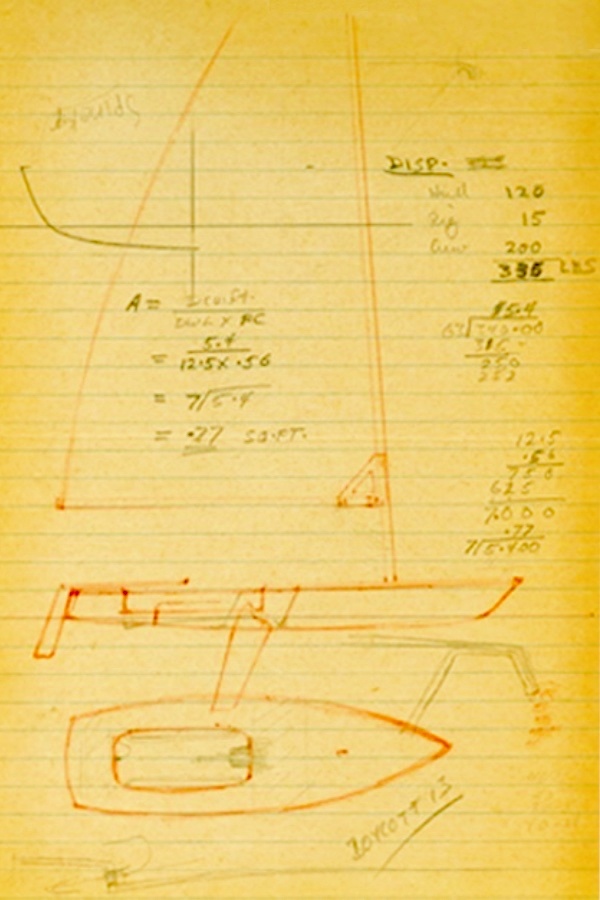
“That sketch paid for our house,” says Margo, Kirby’s wife of 65 years. At the New York Boat Show in Jan 1971, 144 Lasers sold off the floor, a record number of sales that still stands today.
Today, Bruce Kirby is considered to be one of the great yacht designers of all time. The Laser is the first of the single-manufacturer one designs that are now prolific in the sport of sailing. Over a quarter-million have been built.
Bruce Kirby was inducted into the Sailing Hall of Fame in 2012 and named a Member of the Order of Canada in 2017. Margo recalls her mother asking her new son-in-law, “When will you get sailing out of your system?” He never did.
For the full story, see: https://asa.com/news/2021/08/09/bruce-kirby/
Lenox Grasso
ALSO ON MYSAILING

OGR – Winners and Losers on Leg 4
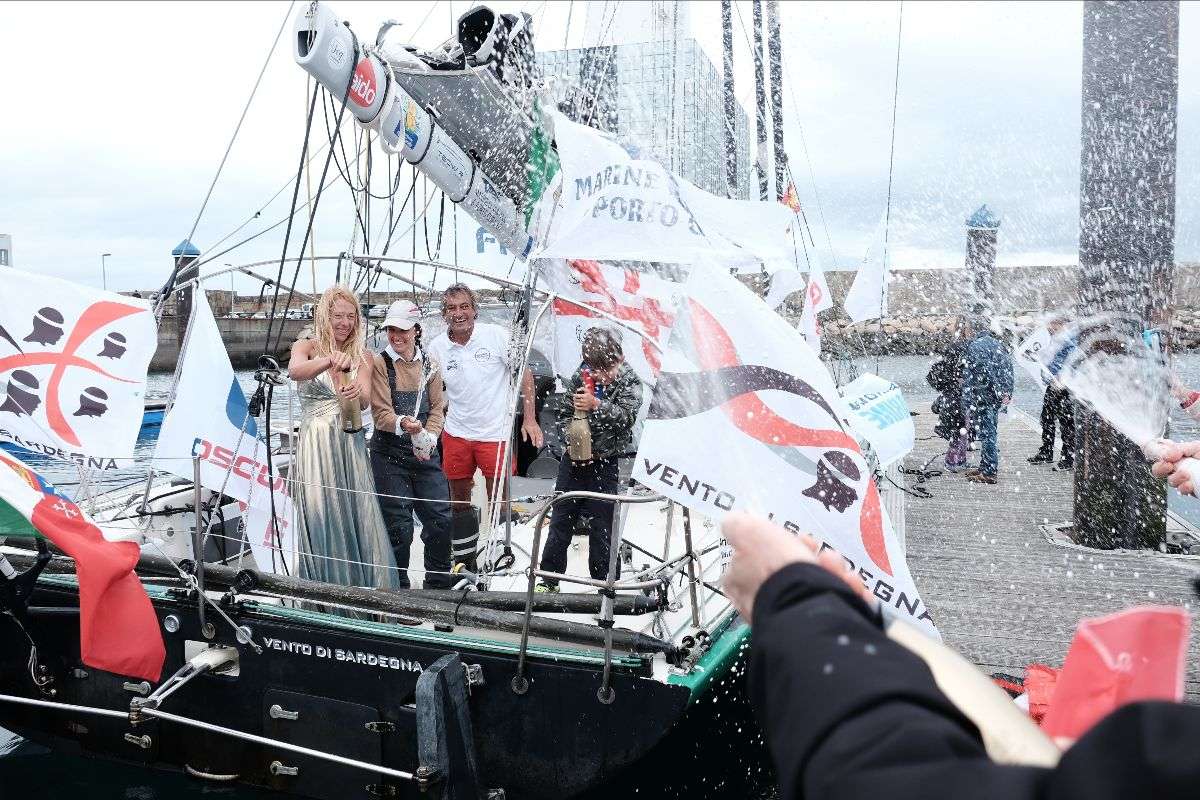
GSC – Andrea Mura reclaims joy on podium
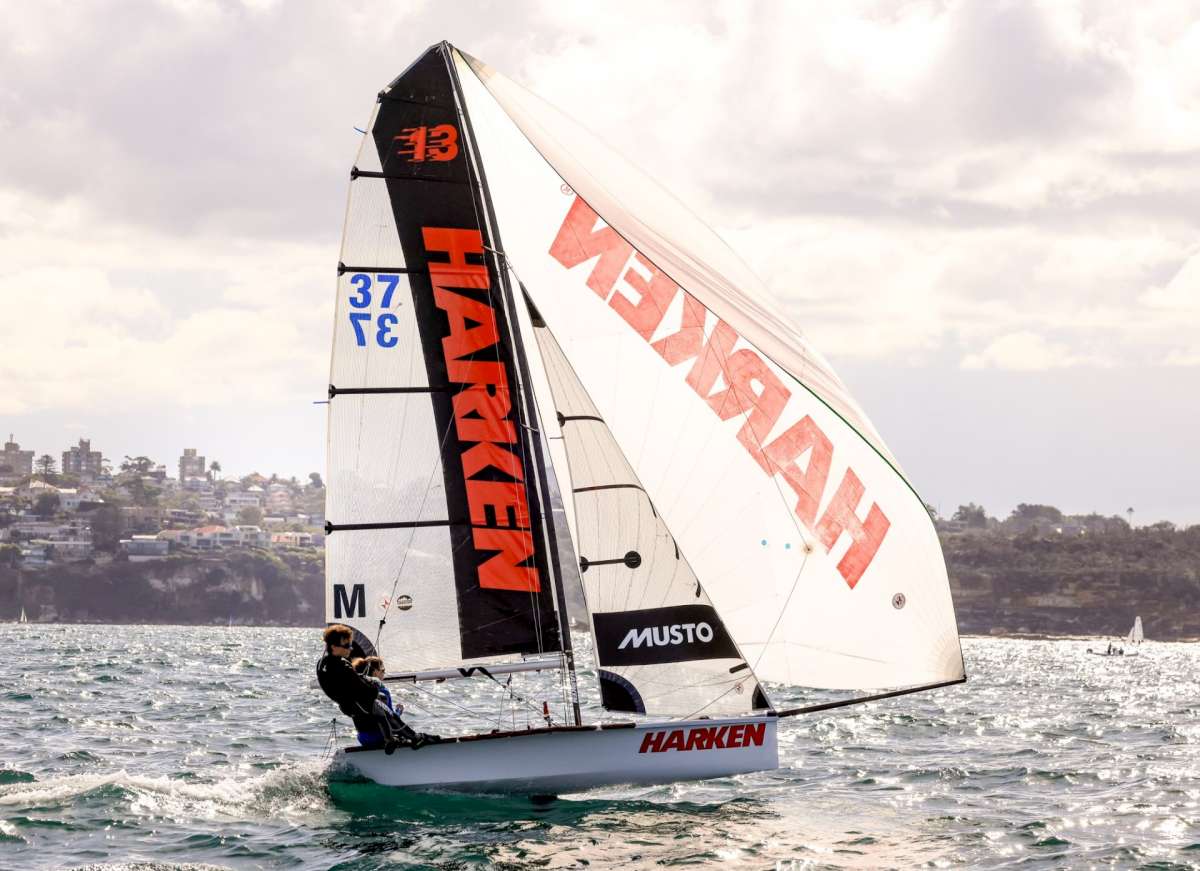
Final Club Championship results at Manly 16ft Skiff Sailing Club
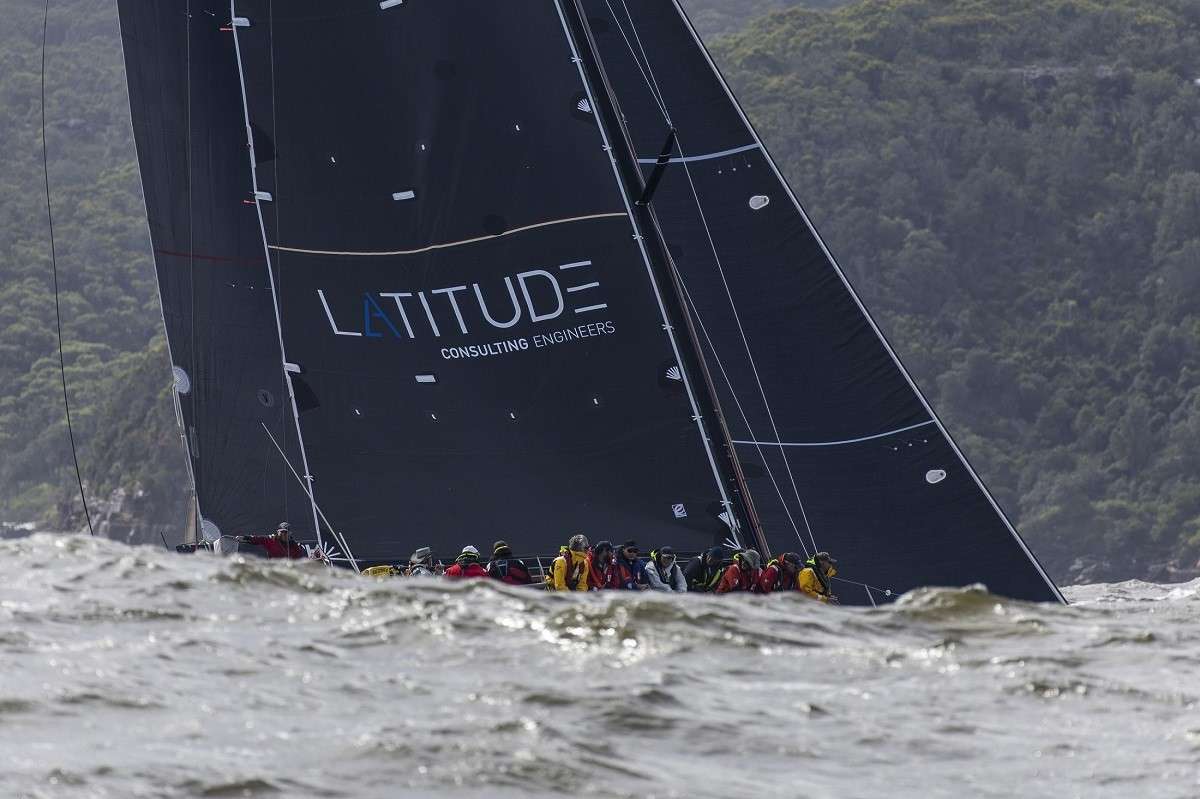
Race is on to win 2024 Pittwater to Coffs Harbour Yacht Race

Outteridge takes the wheel as Schneiter steps back for remainder of Season 4
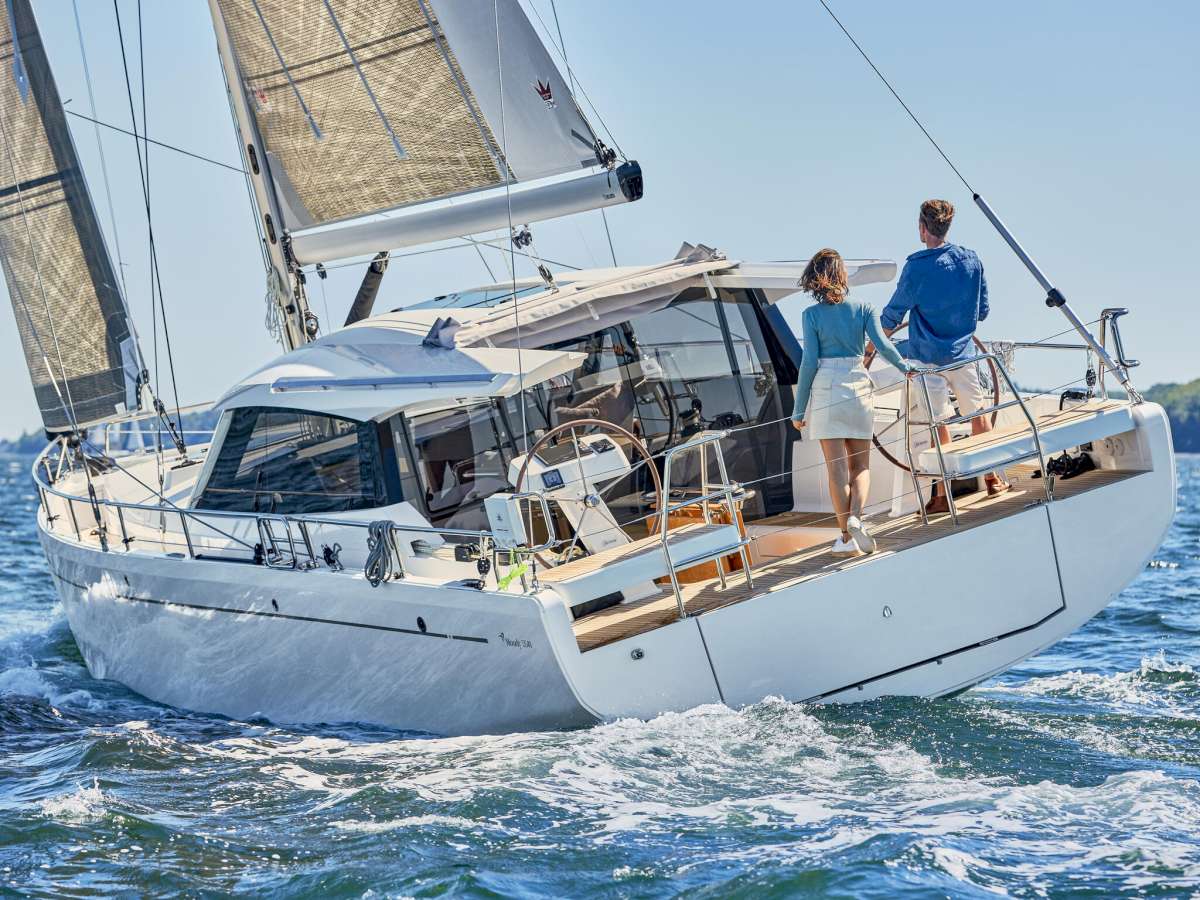
Windcraft presents award-winning sail and power line-up at 2024 Auckland Boat Show

Step into the World of Exploration Boating with the RAND Roamer 29

Tasmanian Sailing – Weekend Wrap

12ft Skiff – Father and son finish top two in NSW Sprint Championship

BYS Women’s Sportsboat Regatta – Day 2

Matador charges to win first Act of TP52 Gold Cup

18ft Skiffs – Queen of the Harbour 2024
Join Our Newsletter
- Name First Last
- Email This field is for validation purposes and should be left unchanged.

Read all of the latest sailing news

Dinghy and Yacht Racing News

News from the offshore world

Cruising Stories from around the world

Boats & Gear
The latest boats and yachting gear

Watch everything sailing and boating
Latest Sailing News, Racing, Cruising, Boats, Gear and more
5th International exhibition of boats and yachts Moscow Boat Show a Huge Success
- Inspiration
Related News
Popular news this week, popular news this month, latest news.
- Yacht Charter & Superyacht News >
Written by Zuzana Bednarova
The first pavilion of Crocus Expo IEC hosted an extraordinary exposition of the 5th International exhibition of yachts and boats Moscow Boat Show. The show had been incredibly famous for five years already not only thanks to the specialists of the market segment as well as professional sportsmen but also thanks to those who consider sailing sport to be their hobby and well cherished dream.
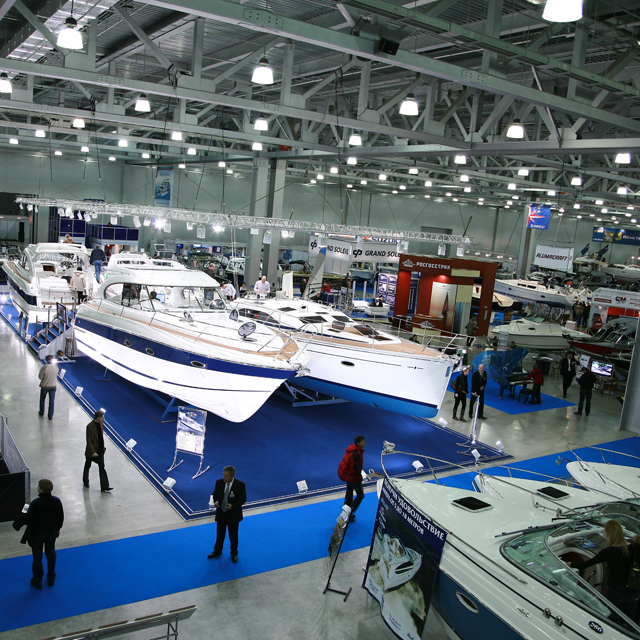
Moscow Boat Show 2012
The organizer of the project was the Crocus Expo International Exhibition Centre. The show was supported by Aston Martin Moscow, Burevestnik Group logistics department and the Yachting specialized magazine.
The exposition space increased up to 30 000 sq m and was accommodated in all 4 exhibition halls of the fairgrounds! 280 Russian (Arkhangelsk, Vyborg, Kazan, Kaluga, Republic of Karelia, Moscow and Moscow region, Nizhny Novgorod, Novorossiysk, Novosibirsk, Rostov-on-Don, Samara, St. Petersburg, Sverdlovsk region, Sochi, Chelyabinsk, Tyumen and Yaroslavl region) and foreign ( Denmark , Germany , Holland , Greece , Spain , Italy , Cyprus , China , Latvia , Poland , USA , Turkey , Ukraine, Finland , France , Montenegro and Croatia ) companies participate in the show.
Moscow Boat Show provided the perfect platform from which to preview new products, evaluate market trends, and establish long-lasting and commercially profitable partnerships. Despite the dynamic changes taking place in Russia and the rapid growth of the yachting sector, the show continued to complement and reflect the industry’s demand and is a promotional opportunity not to be missed!
Unique exhibits were presented at the show for the first time: exposition of private submarines from U-Boat Russia company, Marquis Yachts 420 SB motor yacht from Sport Bridge S. Marine series, SAGA-415 yacht from Saga Boats Norwegian shipyard, Jetlev-Flyer from MS Watersports.
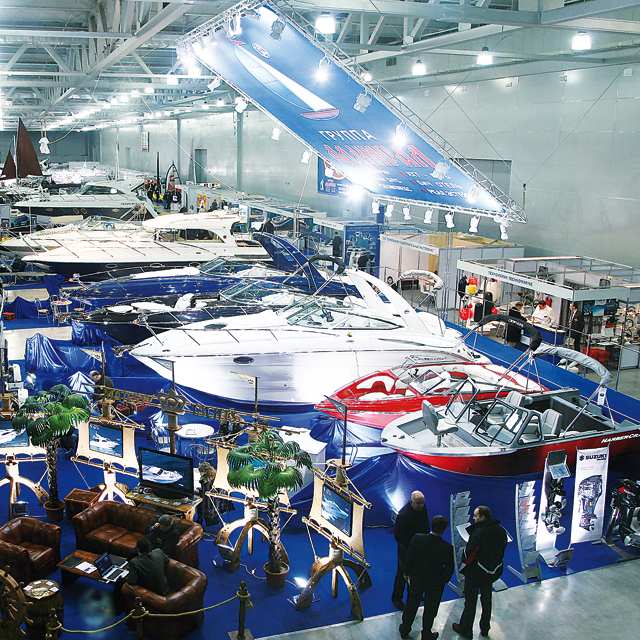
Moscow Boat Show a Great Success
More than 400 yachts were displayed within the frames of the event including the largest boats ever exhibited in Russia – the 19-meter giant motor yacht Princess 54 as well as the Princess 50 yacht from Nord Marine and Baja speed boat from Burevestnik.
Domfinland OY unveiled a luxury project from Finnish real estate: a seaside premium class hotel in Hanko named consonant with the location Merihanko.
The trade fair was traditionally opened by a Gala Opening Ceremony. Arcady Zlotnikov, First Deputy Director Crocus Expo IEC, was the first to take the floor at the official opening ceremony. He greeted warmly exhibitors, guests and visitors of Moscow Boat Show. Nikolay Krjuchek, Deputy Chief of the State Inspection on Small size Vessels (GIMS) of the Ministry for Emergency Situations of Russia, Georguiy Shaiduko, Acting President of the Russian Yachting Federation (VFPS), Olympic champion in Atlanta and Ekaterina Grishechkina, Director of exhibition Moscow Boat Show also spoke at the ceremony.
The high-ranking guests noted dynamic development of the branch which well reasoned the intensive growth of the exposition and appearance of rather unique “gems”.
A number of business meetings and negotiations were held within the frames of the project: the exhibition was visited by a large delegation of Greek businessmen for the purpose of establishment of mutually beneficial cooperation with the Russian colleagues.
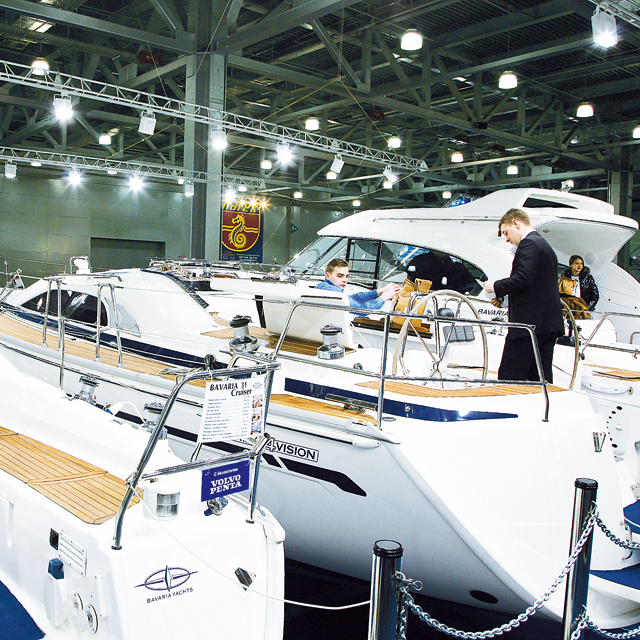
More than 400 yachts on display at the Show
Russian Yachting Federation (VFPS) celebrated its 100 anniversary within the frames of Moscow Boat Show and arranged an exposition of future sailing sport museum (rare awards, gifts, articles from private collections, pictures and etc.) which had been collected since 1912.
Due to carefully chosen running dates the show was visited by more than 26 000 people. The majority of the visitors were of targeted audience – vessel owners and specialists of the branch.
The work at the next edition of the show is under way! The show will be held in March 2013. The overall exhibit space will comprise 40 000 sq m. The exhibition will impress with exclusive exhibits and the latest technological achievements.
Moscow Boat Show was not only an entertaining but at the same time a business promotional event. Participation in the trade fair was a unique opportunity to present a company and products to a distinctly selected targeted audience of industry specialists. They were well prepared to discuss business in the Russian market and even to close a deal on-site.
The show helped representatives of yachting business to get acquainted with their Russian colleagues and gradually improved national yachting market to a new level. It is obvious that for 5 years of its running the project has turned to a status event of the international exhibitions calendar.
Please contact CharterWorld - the luxury yacht charter specialist - for more on superyacht news item "5th International exhibition of boats and yachts Moscow Boat Show a Huge Success ".
- Charity & Fund Raising
- CharterWorld News
- Classic Yachts
- Coronavirus
- Cruise Ship
- Ecological Yachts
- Expedition Yachts
- Expert Broker Advice
- Feature Superyachts
- Interior Design
- Legal & VAT Yacht Issues
- Luxury Catamarans
- Luxury Gulet
- Luxury Phinisi
- Luxury Trimarans
- Luxury Yacht Design
- Luxury Yachts
- Marinas & Harbours
- Marine Ecology
- Marine Electronics
- Marine Equipment
- Mega Yachts
- Modern Yachts
- Motor Yachts
- New Launch Yachts
- New To Charter
- Open Style Sports Yachts
- Private Jets
- Sailing Yachts
- Social Media
- Sports Yachts
- Superyacht Crew
- Superyacht Photographers
- Superyacht Products & Supplies
- Superyacht Refits
- Superyacht Reviews
- Superyachts
- Uncategorized
- Yacht Builders
- Yacht Charter
- Yacht Charter Destinations
- Yacht Charter Picks
- Yacht Charter Specials
- Yacht Delivered to Owner
- Yacht Designers
- Yacht Events & Boat Shows
- Yacht Fashion
- Yacht Industry News
- Yacht Photos
- Yacht Racing
- Yacht Racing & Regattas
- Yacht Safety Equipment
- Yacht Support Vessels
- Yacht Tenders
- Yacht Videos
- Yachting Associations
- Yachting Awards
- Yachting Business
- Yachts For Charter
- Yachts For Sale
Quick Enquiry
Superyacht news:.
Email Your Yachting News to: news @ charterworld.com
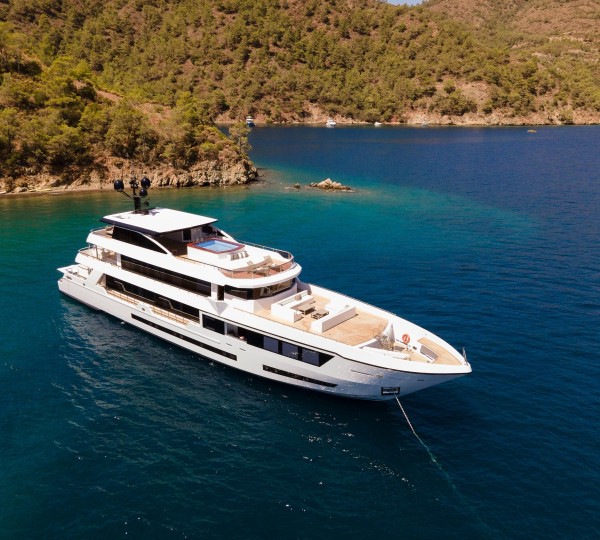
5th Moscow Boat Show, March 20-25, 2012
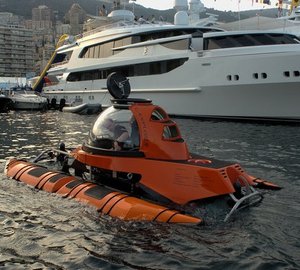
Russian debut for U-Boat superyacht submarines at Moscow Boat Show 2012
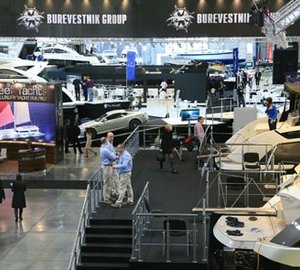
The Gala Opening Ceremony of the 5th Moscow Boat Show held on March 20
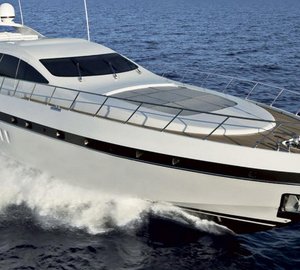
Maxi-Open Mangusta Yachts presented at Boat Shows in Palm Beach and Moscow
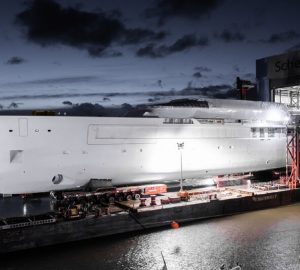
News from Feadship about superyachts PROJECT 712 and PROJECT 715

35m luxury yacht MINOR FAMILY AFFAIR offering a special discount
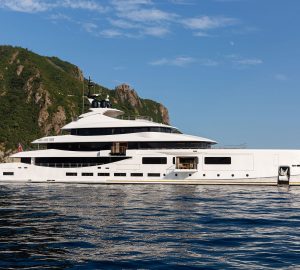
Stunning 70m superyacht ALFA welcoming charter guests for the first time
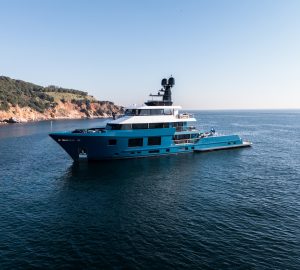
47m motor yacht KING BENJI embarks on a luxurious voyage of opulence and adventure

65m Feadship superyacht PROMISE.D delivered
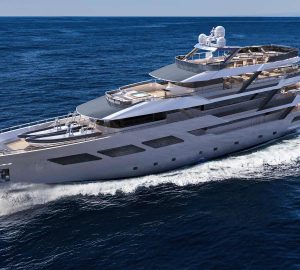
Discover our Top 10 brand new yachts available for charter worldwide this year
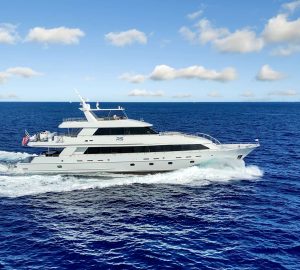
Florida charter yacht REAL SUMMERTIME offering 10% discount
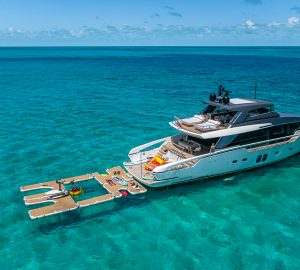
Discover summer in New England aboard a luxury charter yacht: Escape to this beautiful northeast corner of the USA
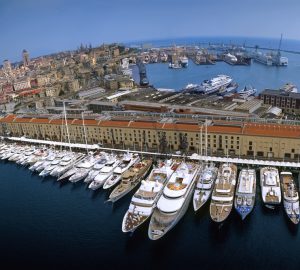
Looking ahead to the 2024 MYBA Charter Show in Genoa
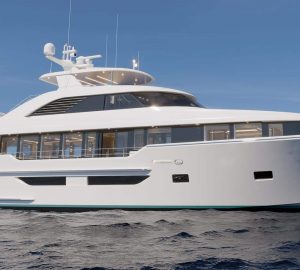
Westport announce the first hull of their 36m W117 range is nearing completion
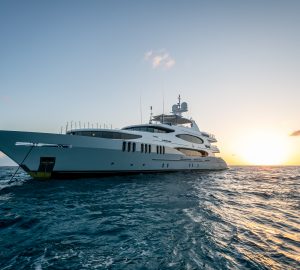
Last minute yacht charter deals in the Bahamas
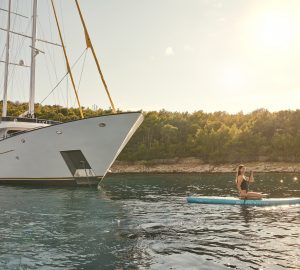
49m sailing yacht ANIMA MARIS is offering discounted rates for the remaining summer weeks in Croatia

IMAGES
COMMENTS
Bruce Robert William Kirby, CM (2 January 1929 - 19 July 2021) was a Canadian-born sailboat designer, dinghy and offshore racer and journalist. His designs spanned in size from the single-handed Laser dinghy to the 12-meter class Louis Vuitton Cup yacht, Canada One.He continued his design work in his American company, Bruce Kirby Marine.
Bruce Kirby, journalist, three-time Olympian and designer of the Laser dinghy, has died at the age of 92. TAGS: Top stories. Bruce Kirby is best remembered as the designer for the Laser single ...
A Canadian newspaperman and former editor of Yacht Racing (predecessor to Sailing World), Bruce Kirby is best known for designing the Laser. Kirby started as a reporter in Montreal before editing Yacht Racing and, in his spare time, taking up yacht design and drawing the Laser. In 1970 Kirby became editor of Yacht Racing & Cruising (later Yacht Racing) where he stayed until 1975. Despite his ...
Then came Canada I, the 1983 Canadian entry for the America's Cup, and its design lifted Kirby's reputation to new heights. "Bruce came up with a good boat," said Terry McLaughlin, the ...
Bruce Kirby, designer of the Laser sailboat. (Marius Bugge) Share ... modern name — Laser — before being unveiled at the 1971 New York Boat Show, where Mr. Kirby and Bruce sold 144 Lasers off ...
ASA Remembers Laser Designer Bruce Kirby. Following in the wake of the death of Frank Butler, President and Chief Executive Officer of Catalina Yachts, in Nov 2020 at age 92, boat designer and three-time Olympian Bruce Kirby, best known globally as the designer of the Laser 14 Olympic sailing dinghy, passed away at his home in Connecticut on 19 ...
Bruce Kirby was born in Ottawa, Canada, on February 2, 1929, and died on July 18, 2021. Initially a nautical journalist, it was the design of an emblematic dinghy that led to his professional breakthrough, the Laser, making him one of the great figures of sailing. At the age of 15, he took part in his first regattas in International 14 dinghies ...
Sail-World Obituary. Bruce Kirby was a newspaper man in Ottawa and Montreal before he became a yacht designer. A competitive sailor in International 14 dinghies from age 15, his focus was on making the boats faster. After being beaten in a regatta at Cowes in heavy wind, he drew the Kirby Mark I on a piece of shelf paper.
An accomplished sailor, Kirby raced boats all his life. (Marius Bugge) Doodling on a yellow legal pad in 1969, Bruce Kirby, who has died aged 92, designed one of the most beloved sailing boats in ...
Bruce Kirby, who has died aged 92, was a Canadian boat designer whose single-person racing dinghy, the Laser, became one of the most successful sailboats in the world.
Bruce Kirby, best known as the designer of the Laser, now known as the ILCA, has passed away at the age of 92yrs. He was a three times Olympian in the Finn class, accomplished, self-taught designer from dinghies to 12 Metres, and a sailing journalist.
Bruce Kirby, Olympian and sailboat designer, on the shores of Long Island Sound. ... When Hudson's Bay decided against selling a boat at all, Kirby told Bruce to hold on to the design: "I put ...
Bruce Kirby in middle age. Sailing legend Bruce Kirby passed away on July 18. He was 92 years of age. Kirby was known around the world as the designer of the Laser, which captured the imagination of would-be sailors all over the world because it was low-priced, fast and could be carried on a car's rooftop. Tens of thousands of sailors got ...
A Canadian newspaperman and former editor of Yacht Racing (predecessor to Sailing World), Bruce Kirby is best known for designing the Laser. Kirby started as a reporter in Montreal before editing Yacht Racing and, in his spare time, taking up yacht design and drawing the Laser. In 1970 Kirby became editor of Yacht Racing & Cruising (later Yacht ...
Bruce Kirby, the man who designed the Laser, considered the most successful production sailboat design in history, passed away July 18, 2021, at 92 years of age. Kirby was a journalist before he turned to yacht design. His first boat design was the Kirby Mark I version of the International 14 dinghy, which led to a revolution in the class.
Whatever its name, Bruce Kirby's simple design became the underpinning of what is now, more than 50 years later, the largest adult and youth sailing class in the world, sailed in more than 150 countries worldwide and a double Olympic class.The boat is such a simple design but clearly one that has survived the test of time. The class extends its deepest sympathies to Bruce's family.
Kirby, Bruce and sail designer Hans Fogh made some refinements and brought their creation to the 1971 New York Boat Show. Priced at $695 and renamed the Laser — to appeal to a younger crowd ...
Today, Bruce Kirby is considered to be one of the great yacht designers of all time. The Laser is the first of the single-manufacturer one designs that are now prolific in the sport of sailing. Over a quarter-million have been built. Bruce Kirby was inducted into the Sailing Hall of Fame in 2012 and named a Member of the Order of Canada in 2017.
Designs from the world famous Laser designer, Bruce Kirby and Iain Oughtred. nisboats : Norwalk Islands Sharpies : plans kits building sailing rigging & lots of boat stuff : Bruce Kirby Designs & Straydog Boatworks
The Paolo Scanu-designed Sunrise 45 yacht is an ocean-going cruising yacht that was released in 2009 to much acclaim at this was the group's first-ever model. Sunrise Yachts was founded in 2007 by the German entrepreneur Herbert P Baum along with the French-British yacht builder Guillaume Roché.
The Ferretti Group, one of the world top companies specializing in the design, building and sale of motor yachts, with an amazing portfolio of eight of the most exclusive and prominent brands, is thrilled to announce its participation in the Moscow Boat Show 2013. From 12 to 17 March, two of the Group fleet's most successful yachts will be presented as absolute premieres for the Russian ...
This image is featured as part of the article Ferretti Yachts and Riva to attend Moscow Boat Show 2013. Riva Iseo superyacht tender Please contact CharterWorld - the luxury yacht charter specialist - for more on superyacht news item "Riva Iseo superyacht tender".
The first pavilion of Crocus Expo IEC hosted an extraordinary exposition of the 5th International exhibition of yachts and boats Moscow Boat Show. The show had been incredibly famous for five years already not only thanks to the specialists of the market segment as well as professional sportsmen but also thanks to those who consider sailing ...